Effective Complaint Letter Template for Professional Use
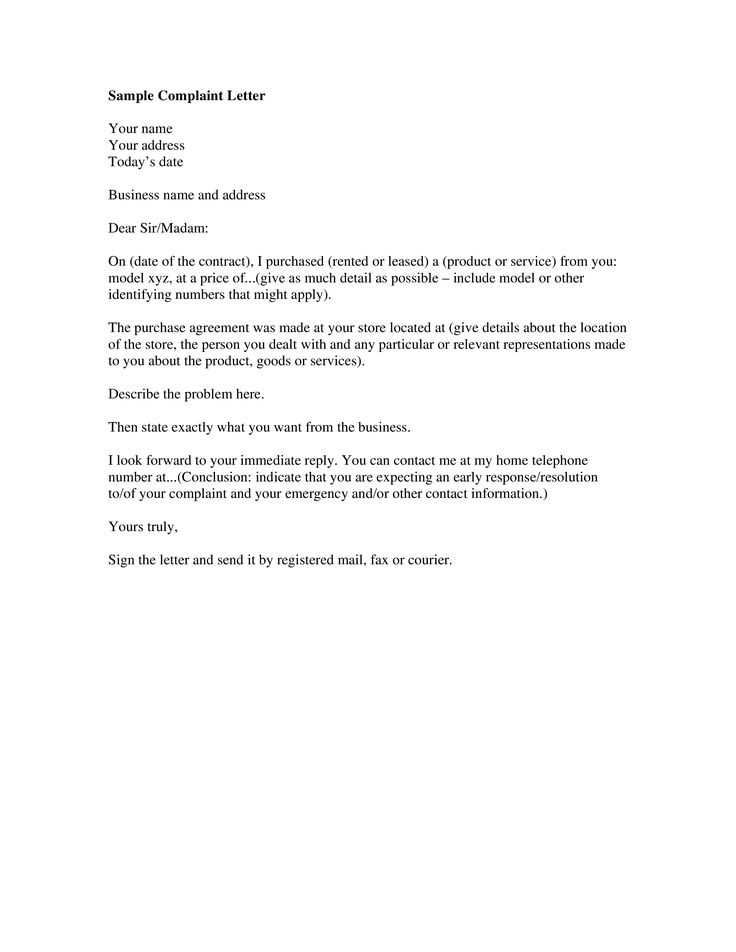
When you encounter a problem with a service, product, or company, it’s essential to express your concerns clearly and respectfully. Crafting a well-structured message can help you effectively communicate your dissatisfaction and encourage a prompt resolution. This guide will assist you in composing a formal request to address any issues you may face, ensuring that your concerns are heard and acted upon appropriately.
Key Components of a Formal Request
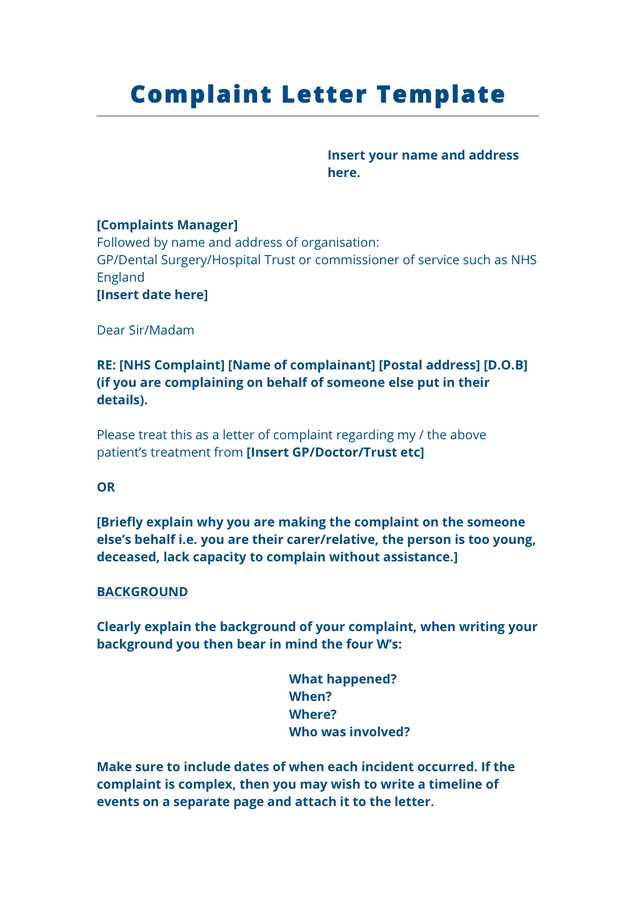
To make your message impactful, it should include the following elements:
- Clear Identification – Include your full name, contact information, and any relevant account or order details to avoid confusion.
- Specific Description – Provide a concise but detailed account of the issue, including dates, locations, or specific product details.
- Expected Outcome – State what you hope to achieve, whether it’s a refund, replacement, or another form of resolution.
- Polite Tone – While expressing dissatisfaction, ensure your tone remains courteous and professional throughout the message.
Structure for Maximum Impact
Follow a straightforward structure to ensure your message is easy to follow and addresses all necessary points:
- Introduction: Start with a brief introduction of yourself and the reason for your message.
- Details of the Issue: Describe the situation clearly, offering any supporting evidence or documentation, if available.
- Request for Action: Clearly state what resolution you are seeking and a reasonable time frame for response.
- Conclusion: Close with a polite sign-off and your contact information.
Best Practices for Effective Communication
When expressing dissatisfaction, be mindful of the following to enhance the effectiveness of your communication:
- Be Direct and Specific: Avoid vague language and ensure your concerns are easy to understand.
- Stay Professional: Regardless of your frustration, maintain a formal tone and avoid aggressive language.
- Provide Supporting Documents: Attach any relevant receipts, photos, or correspondence that can validate your claims.
When to Follow Up
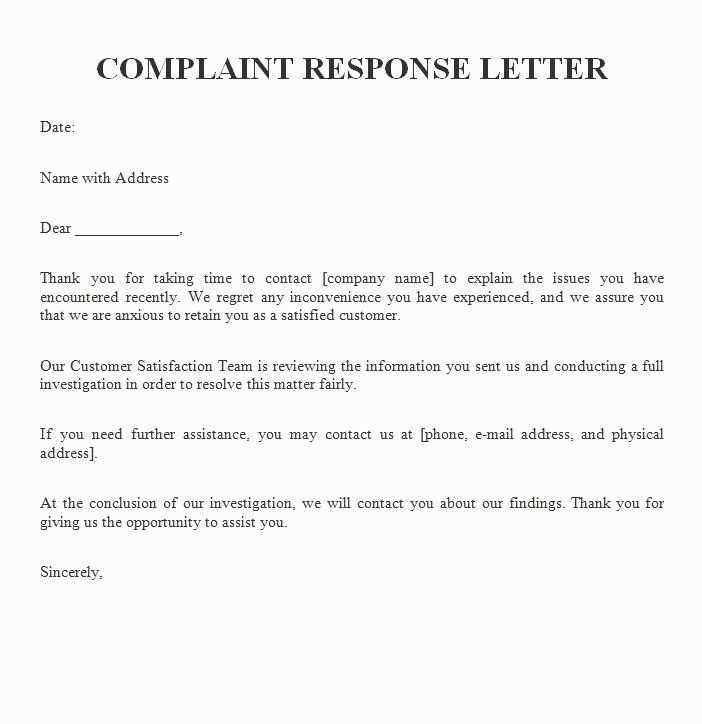
If you don’t receive a response within the expected time frame, it’s appropriate to follow up. Be polite and reiterate the key points of your previous communication. Express your continued interest in resolving the matter and inquire about any progress.
Why Addressing Issues Professionally Matters
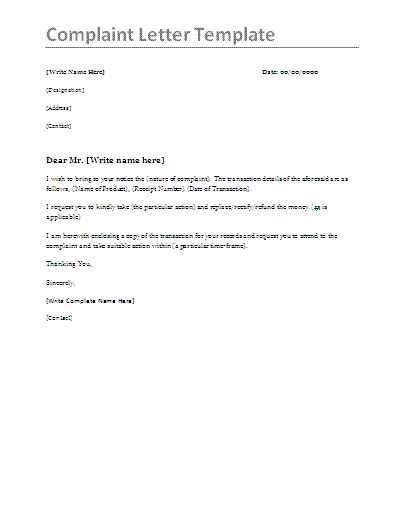
Effectively conveying concerns is crucial for resolving disputes and ensuring the desired outcome. A well-crafted communication allows individuals to express dissatisfaction while maintaining a constructive and respectful tone. This section will explore the key components of creating a strong message, organizing it for clarity, and avoiding common mistakes that may hinder your chances of success.
Essential Elements of a Formal Request
To increase the likelihood of a positive response, make sure your message includes the following components:
- Identification: Clearly state your name, contact details, and any relevant references such as order numbers or account identifiers.
- Details: Provide a precise description of the issue, including any specific dates, locations, or facts that will help the recipient understand the context.
- Resolution: Be clear about what you expect as an outcome, whether it’s a refund, replacement, or another appropriate solution.
- Polite Tone: Ensure your message remains respectful and professional, even when expressing dissatisfaction.
How to Organize Your Communication Clearly
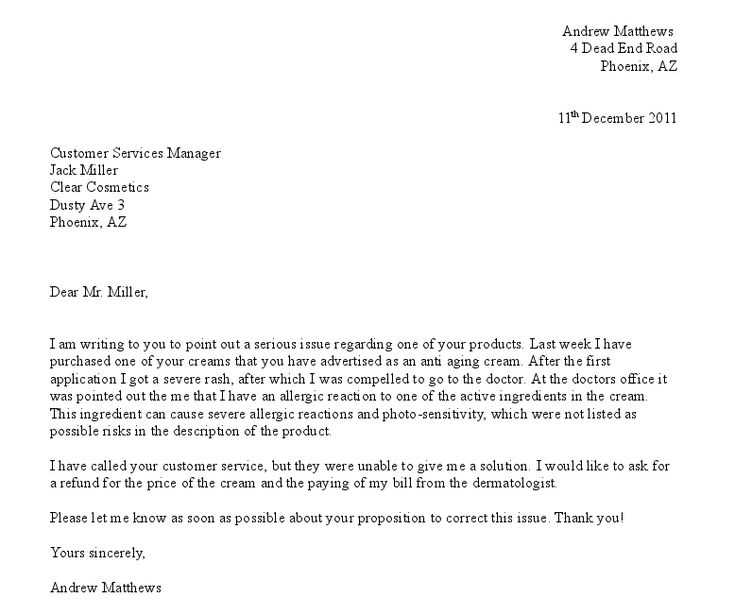
A well-organized message is easier to read and more likely to be taken seriously. Follow a logical structure to help the recipient quickly understand the issue and your expectations:
- Introduction: Briefly state who you are and the reason for your message.
- Issue Details: Describe the problem clearly, including all relevant facts and supporting evidence.
- Action Requested: Specify the resolution you seek and a reasonable timeline for action.
- Conclusion: End with a polite closing and provide your contact information for follow-up.
Organizing your communication in this manner helps ensure clarity and makes it more likely that your issue will be addressed promptly and professionally.
Avoiding Common Mistakes
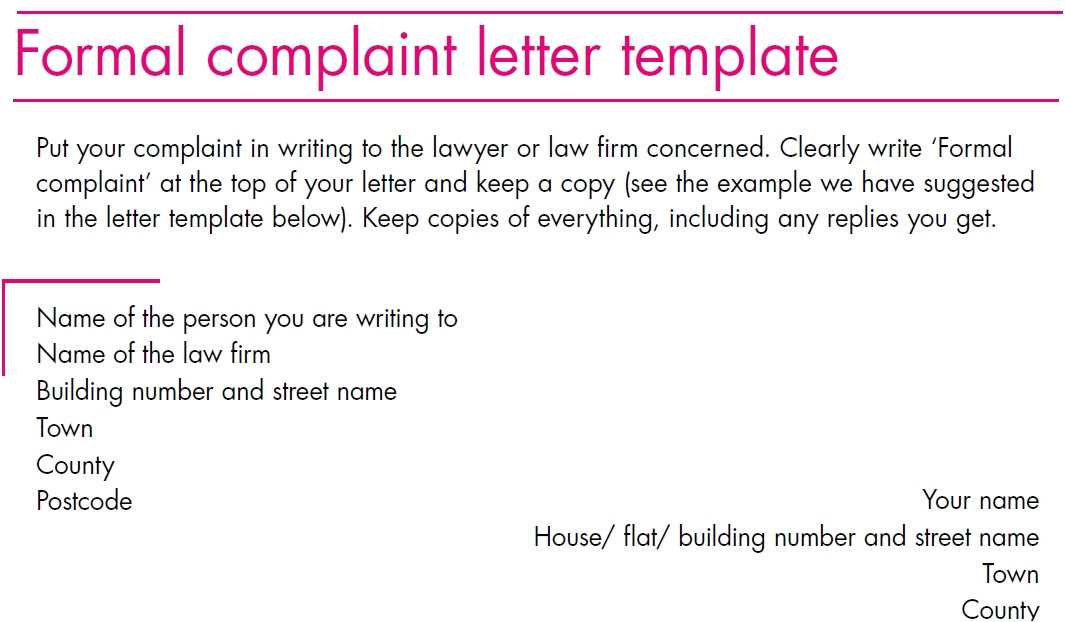
While crafting your message, be mindful of the following common pitfalls:
- Vague Language: Avoid generalizations and ensure that your message is specific and precise.
- Rude or Aggressive Tone: Even if you are upset, maintain professionalism throughout your communication.
- Lack of Documentation: Provide any relevant documents or evidence that support your claims, such as receipts or photos.
By avoiding these errors, your message will be more effective in achieving a satisfactory resolution.
When to Follow Up
If you don’t receive a timely response, it’s appropriate to follow up. Restate the key points from your original communication, politely inquire about the progress of your issue, and reaffirm your interest in resolving the matter. A well-timed follow-up shows persistence and professionalism.